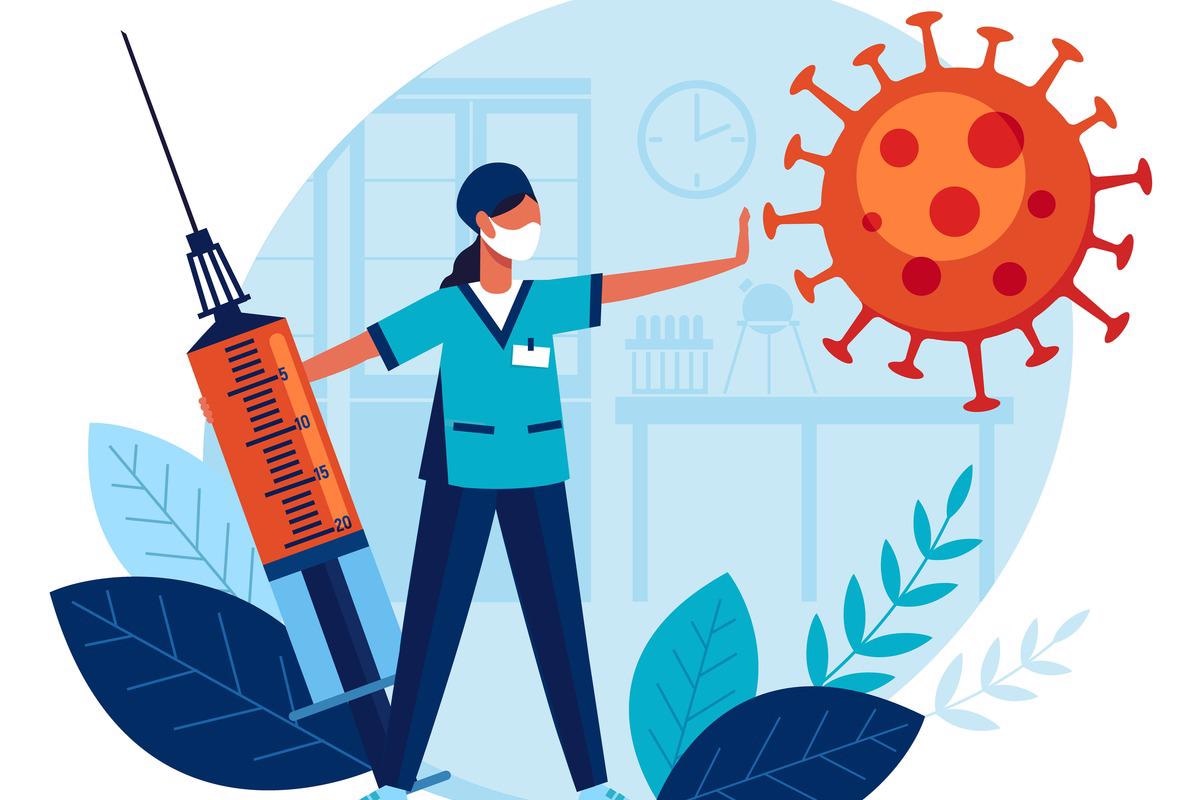 By Neha MathurReviewed by Danielle Ellis, B.Sc.Feb 28 2022
By Neha MathurReviewed by Danielle Ellis, B.Sc.Feb 28 2022In a recent perspective article published in Nature Immunology, researchers emphasized the need to take on a holistic and unbiased approach to develop a universal vaccine for coronaviruses, including severe acute respiratory syndrome coronavirus 2 (SARS-CoV-2), which is a biomedical priority during the ongoing coronavirus disease 2019 (COVID-19) pandemic.
 Study: Fighting the SARS-CoV-2 pandemic requires a global approach to understanding the heterogeneity of vaccine responses. Image Credit: Natalypaint/Shutterstock
Study: Fighting the SARS-CoV-2 pandemic requires a global approach to understanding the heterogeneity of vaccine responses. Image Credit: Natalypaint/Shutterstock
Additionally, they discussed the ideas for generating long-lived, protective immune responses in the vaccinated population that remain undisturbed by genetic and environmental factors, such as age, sex, diet, geographical location, microbiome composition, and metabolites.
Developing an understanding of the innate immune response and host environmental factors that shape the broad and long-term cellular and humoral immune responses that contribute to the heterogeneity in COVID-19 vaccine responses is crucial for developing the next-generation vaccines.
Defining these mechanisms could lead to a universal vaccine that utilizes both arms of the immunity, humoral and cellular, to combat COVID-19. It could protect against future SARS-CoV-2 variants and perhaps other coronavirus strains to control the ongoing COVID-19 pandemic and prevent future ones.
The whole endeavor relies on an increased understanding of the innate immune system and the development of complementing and optimized immunogens, vectors, and adjuvants for next-generation COVID-19 vaccines.
Vaccine-induced immunity: How it works?
In an established vaccine response, antigen-presenting cells (APCs) of innate immunity encounter vaccine antigen at the immunization site and present it to T and B lymphocytes. The immune response of the cross-talk among APCs, T, and B cells is shaped partially by the vaccine vector, immunogen, and adjuvant and partly by the host environment.
Nevertheless, it initiates the innate immune signaling cascades, including retinoic acid-inducible gene I (RIG-I)-like receptors (RLRs), toll-like receptors (TLRs), nucleotide oligomerization domain (NOD)-like receptors (NLRs)), and deoxyribonucleic acid (DNA) sensors.
These cascades trigger discrete transcriptional networks mainly in dendritic cells (DCs) and macrophages, thus modulating the magnitude and the quality of the adaptive immune response, specifically, B cell maturation and antibody isotype switching to vaccines. The balance of these signals determines the degree of boosting of any preexisting immunity.
Identifying the right cascade pathway and effectively targeting the same is crucial for designing a better vaccine strategy. Regarding targeting it therapeutically, innate immunity is again easier to target compared to adaptive immunity, where factors such as human leukocyte antigen (HLA) background and prior exposures can result in highly variable vaccine outcomes.
Further, the authors recommended some ways to directly target innate immunity via vaccination, such as:
- using different adjuvants or altering the immunogenic component(s) of vaccines, for instance, the CpG motifs (or pathogen-associated molecular patterns (PAMPs)) in DNA vaccines;
- ii) target conserved innate pathways upstream of adaptive immunity; and iii) shift focus to controlled clinical trials of potential vaccine adjuvants and determine how host environmental factors, different adjuvants, and different vaccine platforms compare against each other.
Inherent discrepancies with methods evaluating COVID-19 vaccine effectiveness and effect of the microbiome, and dietary variations
Firstly, these measurements are taken after a few months of receiving the primary vaccination regimen, based on the assumption that a study participant has peak immune responses at that time.
Secondly, and more importantly, the COVID-19 vaccine platforms vary widely. For instance, the adenovirus-based vaccines induce lower but long-term antibody response; however, the messenger ribonucleic acid (mRNA)-based Moderna vaccine, because of a higher dose and a longer dosing interval between primary and the booster dose, induces a more durable humoral response. Many independent factors also contribute to the vaccine-induced heterogeneity in the antibody and cellular responses.
Although several mechanisms control factors that shape vaccine effectiveness, of particular interest are the variations in the microbiome of individuals, microbial products, and other metabolites as they hugely impact both innate and adaptive immune responses to COVID-19 vaccines. More specifically, they modulate epigenetics, the intrinsic, innate antiviral immunity (IIAVI), and the innate immune response to impede the initial stages of viral infection and spread.
Furthermore, SARS-CoV-2 has invaded different geographic settings successfully, each endowed with a distinct environment wherein people have varied dietary habits that might affect vaccine efficacy. These factors, in the past, have modulated the immune responses to vaccination of pneumococcal disease and influenza. Similarly, with SARS-CoV-2, the prevalence of distinct viral variants in different geographies raises challenges about vaccine coverage and vaccine durability and argues for the potential development of regional vaccines.
Trained immunity guides the idea of personalized vaccines
Monocytes, macrophages, and DCs, after the first exposure to a pathogen, acquire ‘memory’, and activate pattern-recognition receptors (PRRs) on these cells leading to the upregulation of genes. An altered epigenetic landscape of these cells and enhanced accessibility of transcription factors to their related gene targets results in a potent and quicker immune response to future stimulation, essentially of T cell and B cell memory.
Studies have demonstrated that trained immunity enhanced immune responses with Bacillus Calmette–Guérin (BCG), diphtheria, tetanus, and pertussis (DTP) vaccines, and recently with the influenza vaccines. Hence, it could be the key to personalized vaccines for COVID-19.
Conclusions
Given the intra-platform variability in SARS-CoV-2 vaccine responses and efficacy, however, adopting holistic approaches is a must to define how individual variations in past and present microbial exposure modulate the establishment and maintenance of trained immunity and IIAVI.
To summarize, the authors recommended a holistic approach that would help develop a universal vaccine that would effectively combat and potentially eliminate all coronaviruses, including SARS-CoV-2 regardless of age, preexisting conditions, biological sex, ethnicity, and geographical locale.
This improvised and holistic approach would integrate all components that impact vaccine effectiveness to help get ahead of constantly mutating SARS-CoV-2.